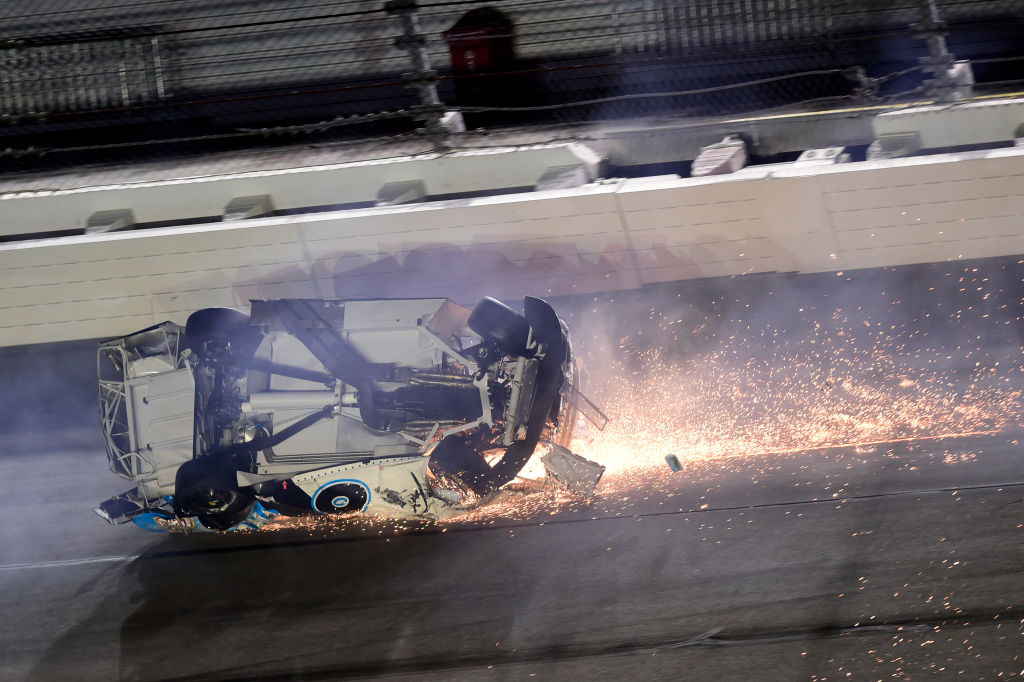Sports
How Many NASCAR Drivers Have Died?

It’s been 19 years since the shocking death of Dale Earnhardt Sr. at the Daytona 500. The death of the racing legend resulted in numerous changes, which have greatly improved the overall safety for the drivers. Since that tragic day, NASCAR has been on the longest streak without a fatality in the race organization’s 72-year history. How many drivers have died in NASCAR history?
How many NASCAR drivers have died?
Since the first NASCAR race on the sandy beaches of Florida in 1948, there have been a total of 28 deaths on the track. The first occurred in 1952 at Langhorne Speedway in Langhorne, Pennsylvania, when Larry Mann’s car crashed through a fence and flipped. Mann was rushed to a nearby hospital but died later that evening from his injuries, which included a pulmonary hemorrhage and massive head wounds. Unfortunately, Mann was the first of three drivers to be killed at Langhorne within five years.
Those early deaths at Langhorne established the Pennsylvania track as one of the most dangerous on the NASCAR circuit. Although Langhorne closed in 1971; it is tied for the second deadliest track in NASCAR history with Charlotte Motor Speedway. The deadliest race track by a considerable margin is Daytona International Speedway.
Daytona has been the site of seven NASCAR deaths since it first opened in 1959. The first one occurred in 1965 when 34-year old Billy Wade was performing a tire test and had a blowout that sent his car careening into the wall. The other six deaths have happened at Daytona since 1970, the last being Earnhardt in 2001.
Dale Earnhardt’s death and changes that followed
RELATED: Why NASCAR Star Tony Stewart Was Never Charged in a Fatal Dirt-Track Crash
The biggest contributing factor for fatal accidents at Daytona has always been speed. Earnhardt’s death resulted from him colliding with the outside wall at speeds calculated between 157-161 mph. The force exerted from the collision on Earnhardt’s body was the equivalent of a vertical drop from 61 feet.
Controversy brewed for months on the actual cause of his death and whether it was due to a faulty or improperly installed seat belt. In the end, investigators determined Earnhardt’s death was the result of his inadequately restrained head and neck snapping forward.
After the accident, most NASCAR teams migrated from traditional five to six-point safety harnesses. NASCAR mandated the use of head-and-neck restraint devices later in 2001. NASCAR also began requiring the use of SAFER barriers at the top touring series race tracks across the country. The soft foam walls move slightly upon impact, dissipate energy, and reduce the force exerted on the driver.
Most significantly, NASCAR developed the Car of Tomorrow (CoT), which incorporated the results from the research conducted in the aftermath of Earnhardt’s death. The CoT design was replaced by the Gen 6 design in 2013 with all of the safety improvements from the CoT incorporated.
Ryan Newman cheats death
RELATED: Ryan Newman Has Severe Lasting Effects From Horrific Daytona 500 Crash
In February, NASCAR fans experienced a disturbing flashback. On the final lap of the Daytona 500, Ryan Newman was leading the race and headed toward the checkered flag when he was involved in a horrific accident.
In one final push toward the finish line, Ryan Blaney’s car unsettled Newman’s vehicle and it made a hard right turn into the wall eerily similar to Earnhardt’s crash years earlier. Newman’s car then went airborne, spun upside down, and was directly struck in the driver-side door by Corey LaJoie. Newman’s car landed on its roof and slid down the front-stretch in a shower of sparks. The stunned crowd watched in silence.
Miraculously, Newman suffered a “brain bruise” and not a single broken bone. He walked out of Halifax Health Medical Center just two days later. Many said Newman was lucky to be alive. Luck might have had something to do with it, but NASCAR deserves a great deal of credit for Newman’s quick recovery and the fact that no NASCAR drivers have died in almost 20 years. That track record isn’t by accident, it’s by design.











